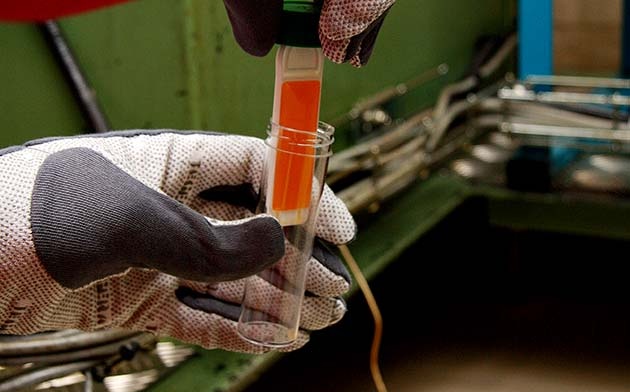Why is it more common with bacteria in small MWF sumps?

A small MWF sump often cause more problems than a large sump, since bacteria grow faster. I have listed five causes of these bacterial outbreaks.
There are many different reasons why bacterial outbreak are more frequent in a small sump than in a large one. The answer is similar to the schedule for a science class (biology, chemistry, physics etc).
1. Biological factors
The amount of organic pollutants and "surface" in the form of pipes and chips where bacteria can thrive, is greater in a small sump in relation to the volume of fluid. Living conditions for organic life are better because there are more "food" per volume of liquid.
Organic pollutants can also cause the temperature to vary greatly, which is also favorable for bacteria.
2. Chemical factors
The fluid's ability to resist bacterial growth (biostatic ability) is dependent on that the correct and constant concentration is kept in the system. In small sumps, the concentration varies much more than in a large sump, which means that the availability for bacteria often are higher.
3. Physical factors
Circulation in small sumps are often very different. Sometimes, depending on the shift, the machine stands still during nights and weekends. During these times, the fluid doesn’t circulate and there’s a great risk of growth of particular anaerobic bacteria.
When the machine is running, the circulation is instead often too high, which reduces the possibility of sediment particles and separate leak oil. A guideline of the sump size is 10-15 times the minute flow of the machine (depending of production).
4. Structural factors
A large sump or a central system often have a dedicated person who has "full control". When it comes to a small or single sump, there are often several operators who keeps track of concentration in all smaller sumps. Then there is an imminent risk that the quality control of the liquid falls through the cracks. I will return to this in a separate blog post.
5. Economic factors
In procurement, the focus was on the machine and it was easy for the supplier to compromise on the quality of the attached sump. A classic misstake is that service and cleaning become almost impossible because the sump is cluttered with pumps, nooks and equipment, and filters are often substandard.
(JÖ)
Do you want to learn more about small sumps?


Comment